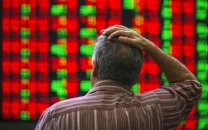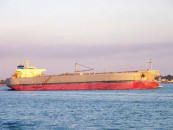Busting the middleman myth
Middleman does not deserve all the contempt that is heaped upon him

A constantly hammering theme in Pakistan’s economic policy circles as well as popular debate about economic challenges is the role of middleman who is often considered a source of all types of evil in the market process.
Although the middleman or distributor is an integral part of each economic sector – think who brings clothes from factories to shops, this debate is more pronounced in the agriculture market.
The middleman, it is believed, exploits both the poor farmer and poor consumer and makes exorbitant profit at the cost of social welfare, moral values and efficiency. This obsession with the middleman has consumed energies of economic policymakers as well as commentators to a disproportionate degree and all kinds of “out-of-the-box” solutions are being proposed.
The solution, sometimes stated and sometimes implied, is the elimination of the role of middleman, with the elusive hope that once it is done, prices will come down.
Read: Farmers’ union stages protest on GT Road near Okara
As this article will hopefully show, the middleman, our bogeyman, does not deserve all the contempt, which is heaped upon him. In fact, if anyone understands sound economics – and is ready to listen to the facts – he will begin to appreciate how fundamental role does the middleman play in our day-to-day lives.
Theory should be sufficient guide for those who care. Muslim theologian Imam Ghazali, 800 years before Ricardo, had discovered the theory of comparative advantage, which says, “…farmers live where farming tools are not available. Blacksmiths and carpenters live where farmers are lacking. Naturally, they want to satisfy needs by giving up in exchange part of what they possess.”
Farmers cannot become distributors and consumers cannot drive every day to the fields to get vegetables at ex-farm prices. We need someone to assume risks and earn profit.
For those who do not understand or believe in this theory, here is some data. The Punjab government maintains the Agriculture Marketing Information System (AMIS) and updates the data of prices diligently.
It maintains data of indicative ex-farm costs of various crops and even indicative prices at the doorsteps of mandi – the wholesale market. From the mandi, the commodity is picked up by retailers or distributors and eventually brought to the cities.
While these costs and margins are suggestive, they can always be compared with the actual price data which the Pakistan Bureau of Statistics (PBS) maintains. Thus, anyone who can compare the ex-farm price with the mandi and finally with the retail can see the extent of margins that the middleman and – for that matter – farmer make.
While the food basket that defines the Consumer Price Index (CPI) has 20 goods, 70% of food expenditure by the bottom 20% income household is made on seven items: fresh milk, flour (atta), three vegetables (potato, onion and tomato), chicken and cooking oil in the same order in terms of burden on expenditure.
I have taken data of wheat and three vegetables, which is available at AMIS and PBS. A note of caution before reading the comparative prices at different levels of the supply chain is in order.
Agriculture markets, especially when they are under all sorts of controls, both by price and trade restrictions, are bound to exhibit greater volatility than other markets. Therefore, probably one needs to be careful to generalise.
However, based on theory, and armed with data, one can see that the middleman is not that exploitative, and the farmer is not that poor! Let’s look at the data now.
In the year 2020-21, the farmer’s estimated margins in key crops – wheat, onion, tomato and potato – range from 15% to 253%. Middleman’s margins, on the other hand, range, more normally, between 18% and 36%. In fact, if you look at it closely, this margin is shared between the wholesaler and retailer.
That the farmer may have made extraordinary profit in one year and lost significantly in another year is a normal trend. Anyone who understands rural economy will know this.
Read more: Farmers urged not to buy fake cotton seeds
Similarly, the fact that the middleman’s margins are within a reasonable bound is due to the lesser risk they have assumed in storing the crop once it is ready and then selling it upon demand. That is Economics 101. What should the government do? In most cases, the government should do nothing more than quality checks and other institutional safeguards such as sanctity of contracts.
The exploitative middleman does not exist, it is our bias that we exhibit. As long as markets are open and competitive, exploitation is checked.
The middleman is pivotal to all economic transactions. While the use of technology is being perceived as a substitute, we need to realise that we are just changing the role here.
Instead of an arhti, we are giving the same or may be more profit to virtual platforms. If the government is setting up markets for exchange between farmers and consumers, it is not free – only that we can’t see its costs.
More dangerously, by doing this, the government has thrown itself into functions it should not bother about and has shunned its more important functions.
The writer is the Executive Director of PRIME, an independent think tank based in Islamabad
Published in The Express Tribune, May 10th, 2021.
Like Business on Facebook, follow @TribuneBiz on Twitter to stay informed and join in the conversation.



















COMMENTS
Comments are moderated and generally will be posted if they are on-topic and not abusive.
For more information, please see our Comments FAQ